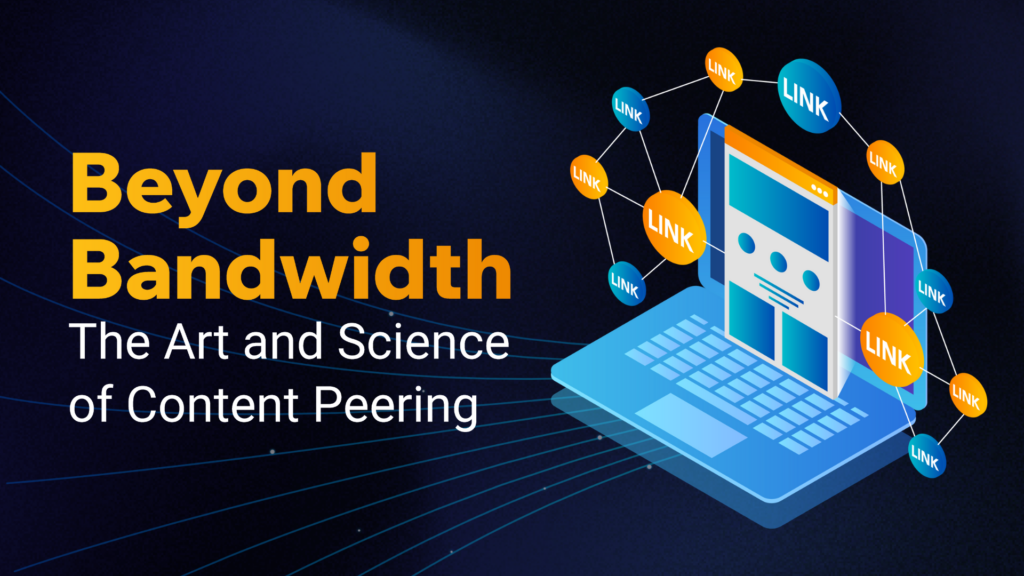
Knowledge of Content Peering Is Essential for Effective Internet Traffic Management
The need for high-quality information distribution is greater than ever in the current digital era. Users demand streamlined, dependable internet experiences whether they are using cloud-based apps, playing online games, or streaming videos.
Content Peering is one of the key technologies that makes this possible. However, what is content peering precisely, and why is it so crucial? Now let’s get started.
Content Peering: What Is It?
The practice of two or more networks, usually content delivery networks (CDNs) or internet service providers (ISPs), agreeing to exchange traffic directly between themselves without passing via other networks is known as content peering. Peering points are the physical sites where these networks join, and here is where the direct exchange takes place.
Increasing data transfer efficiency and speed between networks is the main objective of content peering. Peering minimizes potential points of failure, lowers latency, and shortens the distance that data must travel by avoiding intermediary networks, all of which contribute to faster content delivery.
Different Peering Styles
Public Peering:
- Takes place at Internet Exchange Points (IXPs), which are gathering places for various networks to exchange traffic. usually entails several networks establishing connections to a single switch.
- economical, albeit it may be constrained by the shared infrastructure’s capacity.
Private peering:
- Consists of direct, point-to-point connections made between two networks;
- Typically set up in colocation or data centers;
- Provides more control over traffic flows, more bandwidth, and increased security, but at a higher cost.
What Makes Content Peering Vital?
Improved User Experience: Content peering dramatically lowers latency, guaranteeing faster load times and a better user experience, especially for bandwidth-intensive services like gaming and video streaming, by lowering the number of hops (intermediate networks) data must travel through.
Cost Efficiency: By reducing their need on upstream providers, networks participating in peering arrangements may be able to cut transit costs. This can result in huge savings for ISPs and content providers, which they can then pass along to customers.
Scalability: Content peering enables networks to scale effectively as the demand for digital content increases. Through direct links to other networks or well-known content providers, ISPs are able to manage higher traffic volumes without stressing their current infrastructure.
Increased Reliability: Data transmission reliability can be increased by peering. Direct peering routes can act as backup routes in the case of a network failure, guaranteeing service continuity and lowering the likelihood of interruptions.
The Difficulties of Content Peering
Although content peering has several advantages, there are drawbacks as well:
Agreements and Negotiations: Peering agreements can be complicated to set up, requiring discussions about technical needs, prices, and traffic balance. Arguments can result in conflicts, which may have an impact on the standard of service.
Capacity Planning: In order to prevent congestion, networks must carefully plan their peering capacity. The advantages of direct traffic exchange can be neutralized by overloaded peering points, which can result in lags and subpar performance.
Security Issues: Peering puts networks at risk for extra hazards such possible DDoS (Distributed Denial of Service) assaults. Sufficient security protocols, such as screening and observation, are crucial in countering these dangers.
Future Prospects for Content Peering
The importance of content peering is expected to become even more crucial as internet traffic continues to skyrocket and new technologies like 5G, IoT (Internet of Things), and edge computing become more common. Networks will have to implement more advanced peering techniques, such as the use of automated systems to dynamically manage traffic flows and peering relationships.
Furthermore, more varied and intricate peering ecosystems are probably on the horizon due to the growth of multi-cloud environments and the proliferation of content suppliers. ISPs and CDNs will have to keep improving their peering strategies in order to remain competitive and be able to handle the needs of the internet of the future.
The current internet relies heavily on content peering, which makes content delivery more dependable, efficient, and affordable. Effective peering arrangements will become ever more crucial as digital information continues to spread. Understanding and optimizing peering techniques is crucial for content providers, CDNs, and ISPs to provide the high-quality experiences that modern users demand.
Networks can make sure they are well-positioned to handle the increasing demands of the digital world and give users the fast, dependable internet experiences they desire by investing in strong peering partnerships and infrastructure.
